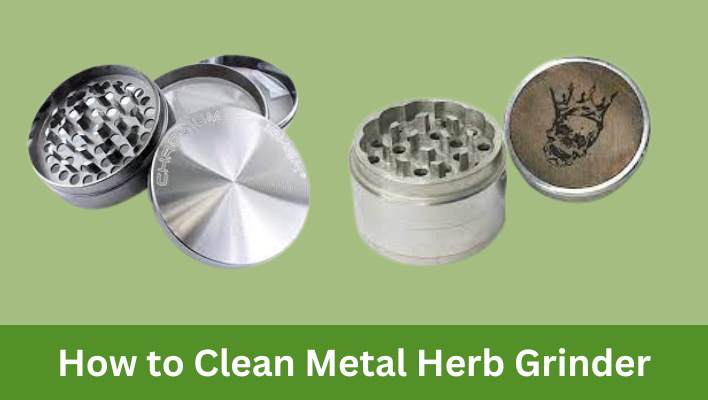To remove static from your coffee grinder, you can lightly mist the beans with water before grinding them. This will help reduce the static and prevent grounds from sticking to the grinder’s walls, resulting in a more consistent grind.
In addition, using a burr grinder rather than a blade grinder can also minimize static due to the slower grinding process. Static in a coffee grinder can be frustrating as it causes coffee grounds to cling to the grinder’s surfaces, leading to uneven grinds and an unpleasant taste in your brew.
By following these simple steps, you can easily eliminate static and enjoy a better cup of coffee.
Understanding The Impact Of Static In Coffee Grinding
Discover the impact of static in coffee grinding and learn how to remove it from your coffee grinder. Gain a better understanding of the static issue to enhance your brewing experience and achieve a consistent grind size for your favorite cup of joe.
The Challenges Of Static In Coffee Grinding
Static electricity is a common nuisance when it comes to coffee grinding. When coffee beans are ground, they generate an electric charge, causing the fine coffee particles to cling to various surfaces inside the grinder. This can lead to a variety of challenges that affect the grinding process and the quality of the coffee grounds.
One of the main challenges of static in coffee grinding is the uneven distribution of coffee particles. The static charge causes the fine coffee grounds to clump together, resulting in an inconsistent grind size. This can impact the extraction process during brewing, as the larger particles may under-extract while the smaller ones may over-extract, leading to an imbalanced and less flavorful cup of coffee.
Another challenge is the mess created by static. The static charge makes the coffee particles cling to the grinder’s chute, spout, and other surfaces. As a result, when you remove the grounds or transfer them to your brewing device, you might find yourself dealing with coffee grounds scattered all over your countertop or workspace. Not only is this messy, but it also leads to wastage of the precious coffee grounds.
Read Also: How to Clean Bodum Coffee Grinder
The Effects Of Static On Coffee Grounds And The Brewing Process
The impact of static on coffee grounds goes beyond just the grinding process. When coffee grounds are affected by static, it can lead to issues during the brewing process as well.
- The first effect of static is inconsistent extraction. As mentioned earlier, the clumping of coffee grounds can result in uneven extraction, leading to an imbalanced cup of coffee with varying levels of bitterness and acidity.
- Additionally, static can cause the coffee grounds to stick to the brewing equipment, such as the coffee basket or the paper filter. This can result in clogged filters, slower flow rates, and even potential overflow, leading to an overall compromised brewing experience.
- Furthermore, static can affect the coffee’s aroma. The clinging of coffee particles can limit the release of volatile compounds that contribute to the aroma and flavor of the coffee. As a result, you might find that your coffee lacks the enticing aroma that you associate with a freshly brewed cup.
To mitigate the effects of static in coffee grinding and ensure a consistent and flavorful cup of coffee, it’s important to know how to remove static from your coffee grinder. By implementing the right techniques and precautions, you can minimize the challenges and optimize your coffee grinding experience.
Best Practices To Minimize Static
When it comes to your daily brew, using a coffee grinder is essential for achieving that perfect aroma and flavor. However, if you’ve ever experienced the frustration of static cling in your grinder, you know how it can negatively impact your coffee-making experience. Not only does static make it difficult to control the grind size and consistency, but it can also lead to messy cleanup. In this section, we will explore the best practices to minimize static in your coffee grinder, ensuring a smooth and enjoyable brewing process every time.
Using Freshly Roasted Coffee Beans
One way to reduce static in your coffee grinder is by using freshly roasted coffee beans. Freshly roasted beans have a higher moisture content, which helps to minimize static electricity buildup. Additionally, the oils present in freshly roasted beans can act as a natural barrier against static. To ensure your coffee beans retain their freshness, consider purchasing whole-bean coffee and grinding it just before brewing. This not only reduces static but also guarantees a more flavorful and aromatic cup of coffee.
Choosing The Right Grind Size For Your Brewing Method
Selecting the appropriate grind size for your brewing method can also play a significant role in minimizing static. Different brewing methods, such as espresso, French press, or pour-over, require specific grind sizes to achieve the best results. Finer grinds, like those used for espresso, can generate more static electricity due to the increased surface area. On the other hand, coarser grinds, like those used for the French press, have less surface area and are less likely to produce static. By adjusting the grind size according to your preferred brewing method, you can help reduce static buildup in your coffee grinder.
Read Also: Can I Use Fine Grind Coffee for Cold Brew
Keeping The Coffee Grinder Clean And Well-maintained
To prevent static from building up in your coffee grinder, it’s essential to keep it clean and well-maintained. Over time, coffee oils can accumulate in the grinder, leading to increased static electricity. Regularly cleaning your grinder’s burrs, hopper, and chute can help remove any residue and minimize static. Additionally, using a brush specifically designed for cleaning coffee grinders can effectively dislodge any clinging particles. It’s also crucial to remember that proper maintenance, such as burr replacement and calibration, can contribute to the overall performance of your grinder and help reduce static issues.
By following these best practices and incorporating them into your coffee routine, you can minimize static in your coffee grinder and enjoy a smoother brewing process. Whether you’re a coffee enthusiast or a casual drinker, taking these steps will ensure your coffee-making experience is free from static-related frustrations, resulting in a delicious cup of coffee every time.
Using Techniques To Remove Static From Coffee Grinder
Learn effective techniques to eliminate static from your coffee grinder. Improve your brewing experience and achieve consistent grinds by implementing these methods.
Tapping The Coffee Grinder To Dislodge Static
One simple and effective technique to remove static from your coffee grinder is by tapping it gently. By tapping the grinder, you can dislodge any static buildup that may be causing the coffee grounds to stick to the interior of the grinder. This method is quick, easy, and doesn’t require any additional tools or accessories.
Here’s how you can tap your coffee grinder to remove static:
- Ensure that the coffee grinder is powered off and unplugged to prevent any accidents.
- Hold the grinder firmly with one hand to provide stability.
- Using the other hand, tap the sides of the grinder lightly with your fingertips or the palm of your hand.
- Continue tapping the grinder from different angles for about 10-15 seconds.
- Once you’ve finished tapping, open the grinder and carefully remove any loose coffee grounds.
By tapping the grinder, you can dislodge the static electricity and allow the coffee grounds to flow freely, resulting in a consistent grind and a better-tasting cup of coffee.
Using Moisture To Reduce Static Buildup
Moisture is another effective method to reduce static buildup in your coffee grinder. By introducing a small amount of moisture, you can help neutralize the static and prevent the coffee grounds from sticking to the grinder’s interior.
Follow these steps to use moisture for reducing static buildup:
- Start by thoroughly cleaning and drying your coffee grinder to ensure that it’s free from any residue.
- Dampen a clean cloth or paper towel with water, making sure it’s damp and not soaking wet.
- Hold the damp cloth or paper towel near the grinder’s chute or any areas where static may be causing the coffee grounds to stick.
- Gently wipe the damp cloth or paper towel against the surfaces, allowing the moisture to come into contact with the static buildup.
- Once you’ve wiped all the surfaces, use a dry cloth or paper towel to remove any excess moisture.
Using moisture is a safe and effective way to reduce static buildup in your coffee grinder, ensuring a smoother grinding process and preventing any clogging or uneven grind size.
Utilizing Anti-static Tools Or Accessories
If tapping or using moisture doesn’t fully resolve the static issue with your coffee grinder, you may consider utilizing anti-static tools or accessories specifically designed to combat static buildup.
Here are some anti-static tools or accessories that you can try:
| Anti-static brush: | An anti-static brush can help remove static from the grinder’s burrs and other hard-to-reach areas. Gently brush the parts to dislodge any static buildup. |
| Silicon funnel: | A silicon funnel with anti-static properties can reduce static cling as the coffee grounds flow through it. It ensures a smoother transfer of the grounds from the grinder to the container. |
| Grounds bin with anti-static coating: | Some coffee grinder manufacturers offer grounds bins or containers with anti-static coatings. These coatings help prevent static from building up and make it easier to remove the grounds. |
By utilizing anti-static tools or accessories, you can significantly reduce static buildup and attain a more consistent and enjoyable coffee grinding experience.
Alternative Methods To Reduce Static In Coffee Grinding
Static in your coffee grinder can be a pesky problem that affects the consistency of your coffee grounds and makes clean-up a hassle. While basic cleaning and maintenance can help mitigate static, there are alternative methods you can explore to further reduce this annoyance. By pre-grinding your coffee beans, using a different brewing method, or exploring advanced techniques, you can effectively minimize the impact of static in your coffee grinding routine.
Pre-grinding Coffee Beans Before Using The Grinder
One effective method to minimize static in your coffee grinder is by pre-grinding your coffee beans before using the grinder. This means grinding small batches of coffee beans in advance and storing them in an airtight container until you are ready to brew. By doing this, the moisture content in the pre-ground coffee helps reduce the static build-up when grinding.
Read Also: How to Use Krups Coffee Grinder
If you decide to pre-grind your coffee beans, it’s important to store them properly to maintain their freshness and aroma. Consider using an airtight container made of glass or ceramic, as these materials help preserve the flavor of your coffee. Additionally, keep your pre-ground coffee in a cool, dark place to prevent exposure to heat and light, which can degrade its quality.
Using A Different Brewing Method To Minimize The Impact Of Static
An alternative approach to reducing static in your coffee grinding experience is by using a different brewing method. Some brewing methods generate less static than others, resulting in a cleaner grinding process. For example, pour-over or drip brewing methods typically produce less static compared to espresso or French press brewing.
If you find that static is a persistent issue, consider experimenting with different brewing methods to identify one that minimizes the impact of static. This not only benefits the grind consistency but also enhances your overall coffee brewing experience.
Exploring Advanced Techniques To Reduce Static
If you are passionate about the perfect cup of coffee and want to delve deeper into reducing static, you can explore advanced techniques. One such technique is using a static reducing tool, often made of stainless steel or carbon fiber. These tools, such as static brushes or paddles, help dissipate static electricity during the grinding process.
Another advanced technique involves adjusting the humidity levels in your coffee grinding environment. By introducing a controlled level of moisture, you can help reduce static build-up. However, it is important to be cautious as excessive moisture can negatively impact your coffee beans’ quality.
Remember to thoroughly research and understand these advanced techniques before attempting them. Consulting with coffee experts or experienced baristas can provide valuable insights and guidance in your pursuit of a static-free coffee grinding experience.
By implementing these alternative methods to reduce static in your coffee grinding routine, you can achieve a more consistent grind and enjoy a cleaner brewing process. Whether you opt for pre-grinding your coffee beans, experimenting with different brewing methods, or exploring advanced techniques, reducing static can significantly enhance your coffee enjoyment.
Troubleshooting And Final Tips
When it comes to battling the pesky issue of static in your coffee grinder, it’s important to be armed with some troubleshooting tips and final tricks to banish the problem for good. In this section, we will explore common issues related to static in coffee grinding and provide additional tips and tricks to minimize static in your coffee grinder.
Common Issues Related To Static In Coffee Grinding
1. Clumping of coffee grounds
If you notice that your coffee grounds are clumping together after grinding, there is a high chance that static is to blame. Static causes the fine coffee particles to stick to each other, resulting in clumps instead of fluffy grounds. This can impact the quality of your brew and yield inconsistent results.
2. Difficulty in achieving a consistent grind size
Static in your coffee grinder can also lead to difficulties in achieving a consistent grind size. The electric charge created by static can cause the coffee particles to repel each other, leading to uneven distribution of particle sizes. This can result in over-extraction or under-extraction of your coffee, resulting in a less than desirable cup of Joe.
Additional Tips And Tricks For Reducing Static In Your Coffee Grinder
1. Use a static-reducing brush
A simple yet effective way to combat static is by using a static-reducing brush. These brushes are specifically designed to dissipate static electricity in your coffee grinder. Before and after each grind, gently brush the inner walls and blades of your grinder to eliminate any static build-up.
2. Grind in a cooler environment
Heat and dry air can exacerbate static in your coffee grinder. To reduce static, try grinding your coffee beans in a cooler environment with relatively higher humidity. This can help to create a more favorable environment for your coffee grounds, minimizing static build-up.
3. Use a high-quality grinder with anti-static features
Investing in a high-quality grinder with anti-static features can be a game-changer when it comes to minimizing static in your coffee grinding process. Look for grinders that come with anti-static coatings or materials, as these are specifically designed to reduce static build-up and provide a more consistent grind.
4. Store your coffee beans in an airtight container
Proper storage of your coffee beans can also help to reduce static. Store your beans in an airtight container to limit exposure to air and moisture, which can contribute to static build-up. This will help to maintain the natural oils and flavors of your beans, resulting in a better overall coffee brewing experience.
5. Experiment with a different grind size
If you’re still struggling with static, try adjusting your grind size. Coarser grinds tend to produce less static compared to fine grinds. Experiment with different grind settings to find the sweet spot that minimizes static while still achieving the desired strength of your coffee.
By troubleshooting and implementing these tips and tricks, you can say goodbye to the annoyance of static in your coffee grinder. Enjoy a more consistent grinding process and elevate your coffee brewing experience to new heights.
Frequently Asked Questions Of How To Remove Static From Coffee Grinder
How Do I Get Rid Of Static In My Coffee Grinder?
To get rid of static in your coffee grinder, you can try a few simple tricks. First, make sure the grinder is clean and free of any moisture. You can also try adding a small amount of water to the beans before grinding.
Additionally, using a different type of bean or adjusting the grind size might help reduce static.
Why Does My Coffee Grinder Have Static?
Coffee grinders have static due to the friction between coffee beans and grinder parts, causing the beans to generate an electrical charge. This static can make coffee grounds stick to the grinder’s container, causing inconvenience while grinding.
What Cleans A Coffee Grinder?
To clean a coffee grinder, follow these steps: 1. Unplug the grinder and remove any leftover coffee beans. 2. Use a brush or cloth to wipe away any loose coffee grounds. 3. Disassemble the grinder and wash the removable parts in warm soapy water.
4. Dry the parts thoroughly before reassembling the grinder. 5. Run a small amount of rice through the grinder to remove any remaining odor or residue.
How Do You Remove Static From Plastic?
To remove static from plastic, rub the surface with a dryer sheet or apply a small amount of fabric softener on a cloth and wipe it over the plastic. Another option is to use an anti-static spray or a solution of water and a few drops of fabric softener.
Conclusion
To sum up, effectively removing static from your coffee grinder is essential for preserving the quality and flavor of your brew. By implementing the simple techniques mentioned such as using a static-reducing brush or adding a small amount of moisture, you can eliminate the pesky static that interferes with your grind consistency.
So, take action now and experience a smoother and more consistent coffee grinding experience. Happy brewing!




